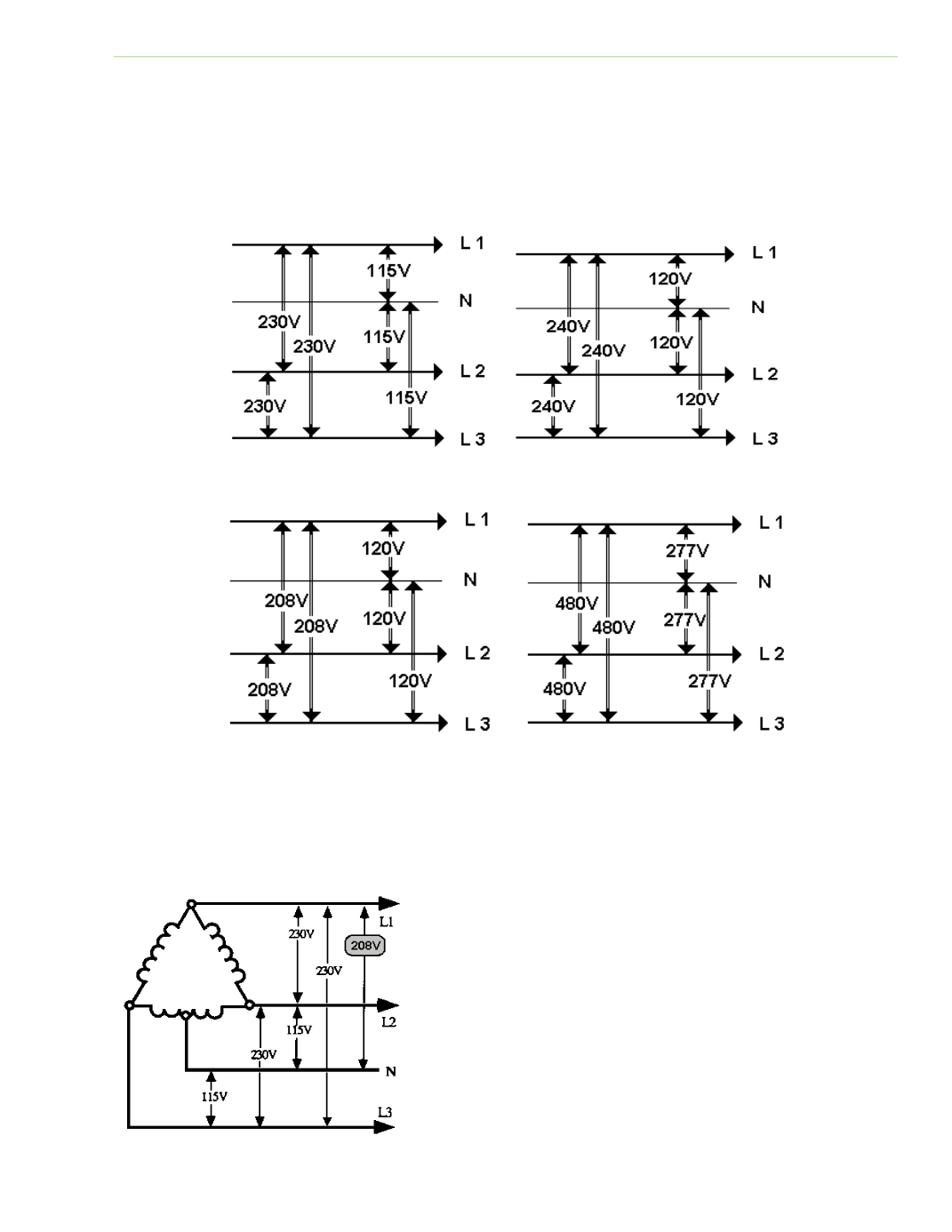

Electrical Theory & Applications for HVACR
Chapter 2: Circuits and Their Components
Page 27
secondary winding is considered to be a power source for any loads connected to the transformer.
Single‐phase transformers usually have two wires for the primary winding and two for the secondary.
Three‐phase transformers can be of the Wye or Delta type, although the Wye, or Star, is most
popular. Because electricity is produced in three phases, a variety of Wye, Delta, Wye‐Delta, or Delta‐
Wye transformers are used. Various voltages are in common use. See Figures 2‐17(a‐d).
Some older systems use a high‐leg system from a three‐phase (3Ø) Delta transformer. Voltage
readings from two of the hot legs to neutral will read 115 volts. However, one of the hot legs to
neutral will register 208 volts. This wire is called the sƟnger, high leg, or wild leg, and cannot be used
for 115‐volt circuits. See Figure 2‐18.
Fig. 2‐17(a): 230 V, 3 Ø, 4‐wire
Fig. 2‐17(b): 240 V, 3 Ø, 4‐wire
Fig. 2‐17(c): 208 V, 3 Ø, 4‐wire
Fig. 2‐17(d): 480 V, 3 Ø, 4‐wire
Fig. 2‐18: Delta high‐leg system










